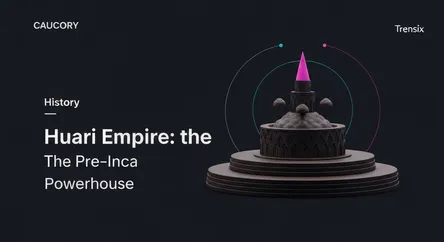History
Huari Empire: The Pre-Inca Powerhouse

Discover the Huari Empire, the powerful Andean civilization that preceded the Incas, known for its roads, cities, and military might.
What is it?
The Huari (or Wari) Empire was a major civilization that flourished in the south-central Andes and coastal regions of modern-day Peru from approximately 600 to 1100 AD. Pre-dating the more famous Inca Empire, the Huari were masterful architects and engineers, known for establishing provincial capitals and an extensive road network to connect their territories. Their capital city, Huari, located near present-day Ayacucho, was a large urban center at its peak. Often described as a militaristic and expansionist state, the Huari unified a diverse range of local peoples under a centralized administration, spreading their distinct art style, characterized by stylized deities and intricate textiles, across the region.
Why is it trending?
The Huari Empire is gaining attention due to ongoing archaeological discoveries that are rewriting early Andean history. For centuries, they were overshadowed by the Incas, but recent finds reveal the Huari were pioneers of many administrative and engineering strategies later adopted by their successors. Excavations at sites like Cerro Baúl and the 2023 discovery of a ritual complex in Arequipa provide new insights into their culture, imperial control, and interactions with contemporaries like the Tiwanaku civilization. This research highlights the Huari's crucial role in laying the political and infrastructural groundwork for the later Inca Empire.
How does it affect people?
The Huari Empire profoundly shaped the trajectory of Andean civilization. They introduced large-scale terraced agriculture and irrigation systems to manage a challenging environment, a legacy continued by the Incas. For the peoples they conquered, Huari rule meant political consolidation, the imposition of a new culture, and integration into a state-controlled economic network. Today, the study of the Huari provides a deeper understanding of Peruvian national heritage and the complexities of ancient empire-building. Their ruins are significant archaeological sites that attract tourism and fuel ongoing academic research into the foundations of Andean societies.